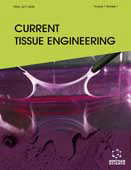Abstract
Background: Articular cartilage plays a critical biomechanical function in physiological activities of joints, owing to the unique biochemical structures of the tissue. In osteoarthritis, cartilage irreversibly loses its integrity in extracellular matrix organization followed by enzymatic degradation, leading to the deterioration in joint function. Often surgical interventions with implantation of autologous chondrocytes or engineered cartilage tissue, a promising alternative, are necessary to restore cartilage function. Therefore, non-invasively assessing and monitoring the outcomes of repair surgeries is an important issue for cartilage regeneration. Quantitative MRI methods show great promise in assessing the extent of the repair and elucidating information on the biochemical composition of the repair cartilage.
Methods: PubMed and Web of Science searches were run on queries related to MR imaging of healthy, diseased and regenerated cartilage in human, animal and in vitro studies. The results were synthesized to highlight key themes in current technologies and future directions.
Results: Three imaging techniques emerged as the most widely studied: T2 imaging, gadolinium enhanced T1 (T1Gd) imaging and diffusion imaging. T2 imaging can be used to determine if the zonal architecture of cartilage has been replicated by the repair tissue, T1Gd is widely utilized to quantify the amount of proteoglycans in the repair tissue, and diffusion imaging can quantify the direction and magnitude of the mobility of water molecules through the cartilage.
Conclusion: Quantitative MRI shows great promise as a non-invasive measure of regenerated cartilage health. Studies are more successful when they combine multiple modalities to achieve a multi-parametric view of cartilage properties. Taken together, T2, T1Gd and diffusion imaging have great potential to accurately assess the success of cartilage regeneration and repair.
Keywords: Articular cartilage, cartilage repair, contrast agent, diffusion imaging, MRI, quantitative imaging.
 12
12

